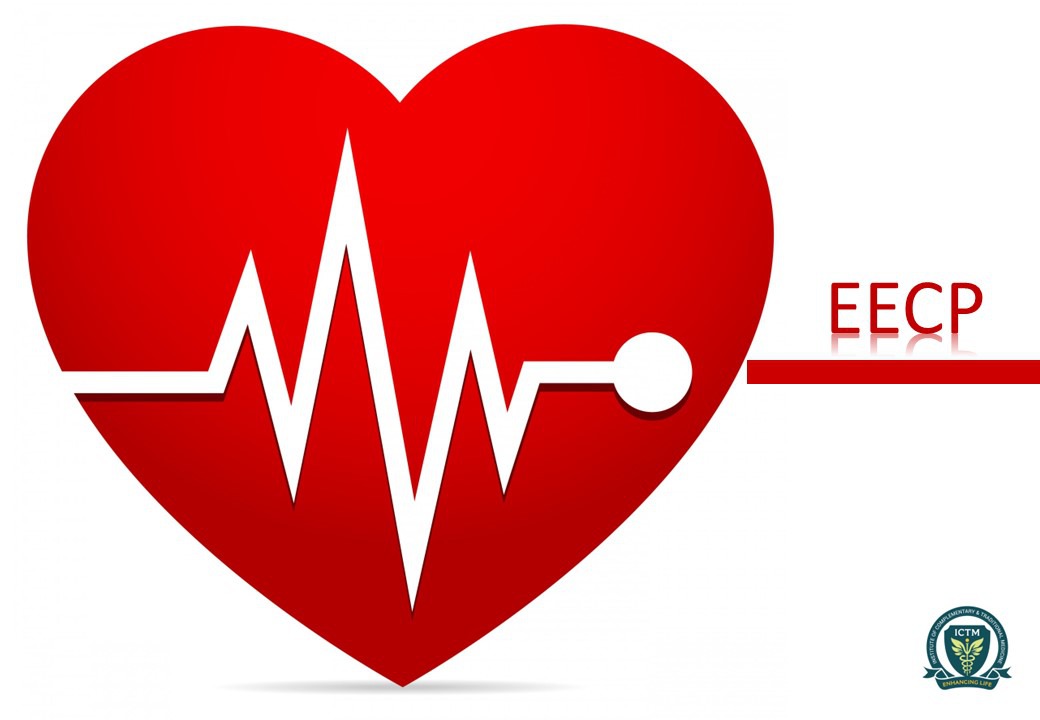Is Aromatherapy combined with Traditional Chinese Medicine a good match?
Secretary-General ICTMNutritional & Functional Medicine

Secretary-General
ICTM
Nutritional
& Functional Medicine Practitioner, DSY Wellness & Longevity Center
McMed
(NM), F’Ship Anti-Aging Metabolic & Functional Medicine (A4M, USA)
EECP and its Potential Benefits for Heart Disease - Part
2
Let's continue to discover the benefits of EECP
therapy. We mentioned EECP therapy improves cardiac function through
compression on the lower extremities and buttocks. And the study showed
significant improvements in cardiac symptoms and diseases, including coronary
artery disease, angina pectoris and heart failure. Due to poor blood vessels
and heart function, most patients with chronic heart disease are usually
vulnerable to concomitant illness. Pieces of evidence imply that EECP therapy
may indirectly benefit patients with these diseases.
Apart from direct cardiac benefits, patients with
these concomitant diseases may benefit from undergoing EECP therapy.
Post-Covid fatigue
During the pandemic covid 19, a considerable number of
people were infected and developed sequelae. The most reported post covid
symptom is fatigue. A patient's brain fog and dyspnea improved after completing
sessions of EECP treatment. Scientists
hypothesised the improvement may be due to the
stimulation effect of the coronary artery by EECP treatment.
Helps in glycaemic control in patients with Type II
diabetes
Type II diabetes is a chronic illness common in
patients with chronic heart disease. It involves the functional deficiency of
insulin, and this hormone helps to regulate high blood sugar. Type II diabetes
also serves as a risk factor and prognosis factor for heart disease. It is
suggested that uncontrolled diabetes damages the cell lining of the blood
vessel. Vessels are vulnerable to broken and eventually cause limited blood
flow to coronary vessels. Nevertheless, the clinical study showed that EECP
therapy will increase sugar uptake into skeletal muscle, enhance the insulin
effect, and ease the status of Type II diabetes.
Restless legs syndrome
EECP therapy is found to be safe and also helps to
relieve symptoms in this patient group. For example, peripheral neuropathy,
which causes unpleasant sensations in the lower limbs, has been hugely
relieved. This may be because of increased blood flow to the lower extremities
by the intermittent pressure exerted on them. Hence, the function of the nerves
was then improved.
Chronic Obstruction Pulmonary Disease (COPD)
Patients with COPD feel hard to develop habits of
regular exercise because of their frequent shortness of breath. So, their low
exercise endurance is usually not favourable for aerobic exercise, contributing
to muscle weakness in patients with COPD. The intervention of EECP has brought
a little hope to this dilemma. A study revealed that patients with COPD who
underwent EECP therapy have increased blood flow to cardiac muscle and the tolerability
of muscles to low oxygen levels. A small number of patients also benefit from
lung function after completing EECP.
Acute kidney injury
EECP therapy can improve blood flow and the filtration
of kidneys and blood flow. It can increase urine output and helps to excrete
excess ions and unwanted waste. And then, the blood pressure can be lowered in
the body.
How does EECP therapy perform?
Before the procedure:
During the procedure:
After the procedure:
You do not need to stay at the therapy centre or
hospital after the procedure. It is normal to feel tired after therapy. You may
feel improvements in symptoms after completing 30-35 consecutive sessions. It
is advisable to seek medical services when your thighs have a persistent bruise
or you experience exacerbated chest discomfort after ECCP therapy.
Since there is so much evidence to show the advantages
of undergoing EECP therapy, who is eligible for EECP therapy?
- Patients have long-term chest
discomfort, which affects patient's physical activity.
- Patients who have persistent
chest discomfort even after drug control.
- People with coronary artery
disease who cannot undergo surgery or revascularisation procedure, including
angioplasty, PCI and CABG due to age and medical condition
- Have long-term chest discomfort
and affect patient's physical activity
- People with multiple previous
revascularisations and other invasive procedures but symptoms remained or
renewed.
- Patient preference
Who should not undergo EECP therapy?
- Pregnancy
- Aortic insufficiency.
- Atrial fibrillation (Afib).
- Blood clots.
- Congenital heart disease.
- Enlarged heart
- Valvular disease.
- Haemorrhage.
- Hypertension
- Irregular heartbeat.
- Fast heart rate
- Severe peripheral vascular
disease.
Any questions regarding EECP?
There is a ton of noise regarding EECP therapy in the health
industry. As every cardiac case is unique, every patient should be
comprehensively evaluated by medical professionals on a case-by-case basis.
Therefore, while exploring different options for your heart disease, it is
always important to seek professionals' advice before proceeding. If you're
worried about your chest discomfort with the introduction of the EECP therapy,
you could contact us through secretary@ictm.com.